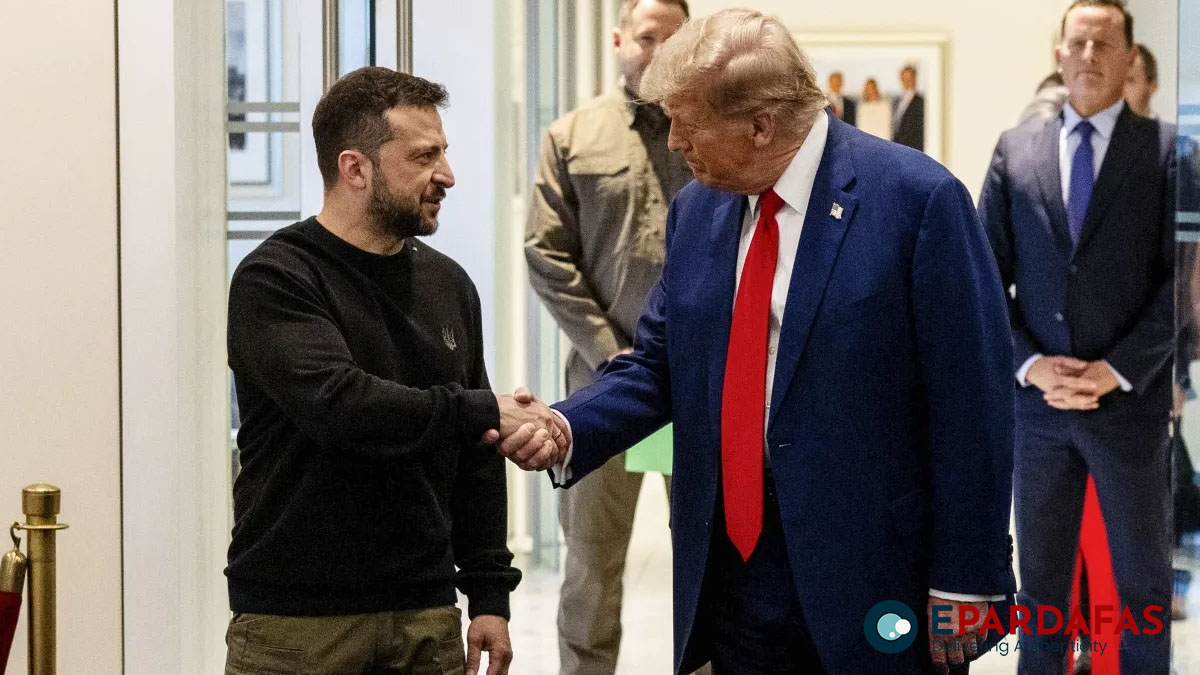The United States and Ukraine have reached an agreement granting Washington access to Ukraine’s mineral resources, following tensions between US President Donald Trump and Ukrainian President Volodymyr Zelensky over financial aid and security commitments. Key details of the deal remain uncertain, including its financial scope and whether it includes long-term security guarantees for Ukraine.
Trump had initially demanded $500 billion in compensation for US military and economic aid provided to Ukraine since Russia’s invasion in 2022, a figure nearly four times the $120 billion Washington has disbursed, according to the Kiel Institute. Zelensky firmly rejected the demand, arguing that it would place an unbearable financial burden on future Ukrainian generations. A source familiar with the negotiations revealed that this provision has been removed from the latest draft of the agreement. Instead, the accord now proposes joint development of Ukrainian mineral resources, with revenues directed to a shared US-Ukrainian fund. The Ukrainian source stated that all clauses that did not align with Kyiv’s interests, particularly the $500 billion compensation demand, had been removed.
Ukraine has insisted that any agreement must include strong security guarantees to deter future Russian aggression. Zelensky previously proposed leveraging access to Ukraine’s natural resources in exchange for security assurances as part of his five-point Victory Plan in October 2024. While Kyiv ultimately seeks NATO membership, this option remains off the table due to opposition from Washington and Moscow. Ukraine has also advocated for deploying foreign peacekeeping troops in the event of a ceasefire, but the US has rejected this proposal, and European allies remain divided. The minerals deal may reference Ukraine’s security but without concrete guarantees. Ongoing discussions could result in general commitments to investment in a stable and sovereign Ukraine, with mentions of lasting peace and US support for security guarantees, according to the source.
Ukraine possesses approximately five percent of the world’s known mineral resources, including significant deposits of manganese, titanium, and graphite. The country holds 20 percent of the world’s estimated graphite reserves, which are essential for electric battery production. It also has one of Europe’s largest lithium deposits, though extraction has not yet begun. Rare earth metals have been identified in six locations, including the Novopoltavske deposit, which requires an estimated $300 million investment for development. However, many of these resources remain untapped or lie in Russian-occupied territories, complicating US access. Novopoltavske is currently under Russian control, and Moscow has ruled out ceding any occupied territories.
Russian President Vladimir Putin has unexpectedly expressed support for US investment in Russian-occupied regions, raising further geopolitical questions about resource control in the ongoing war. Meanwhile, the Shevchenko lithium deposit, a major source of tantalum, niobium, and beryllium, lies less than 10 kilometers from the front lines near Pokrovsk, an area where Ukrainian forces continue to face intense Russian advances. As negotiations continue, the US-Ukraine minerals deal remains a complex and evolving agreement, balancing economic interests with geopolitical and security concerns.
Input from agency














Comments